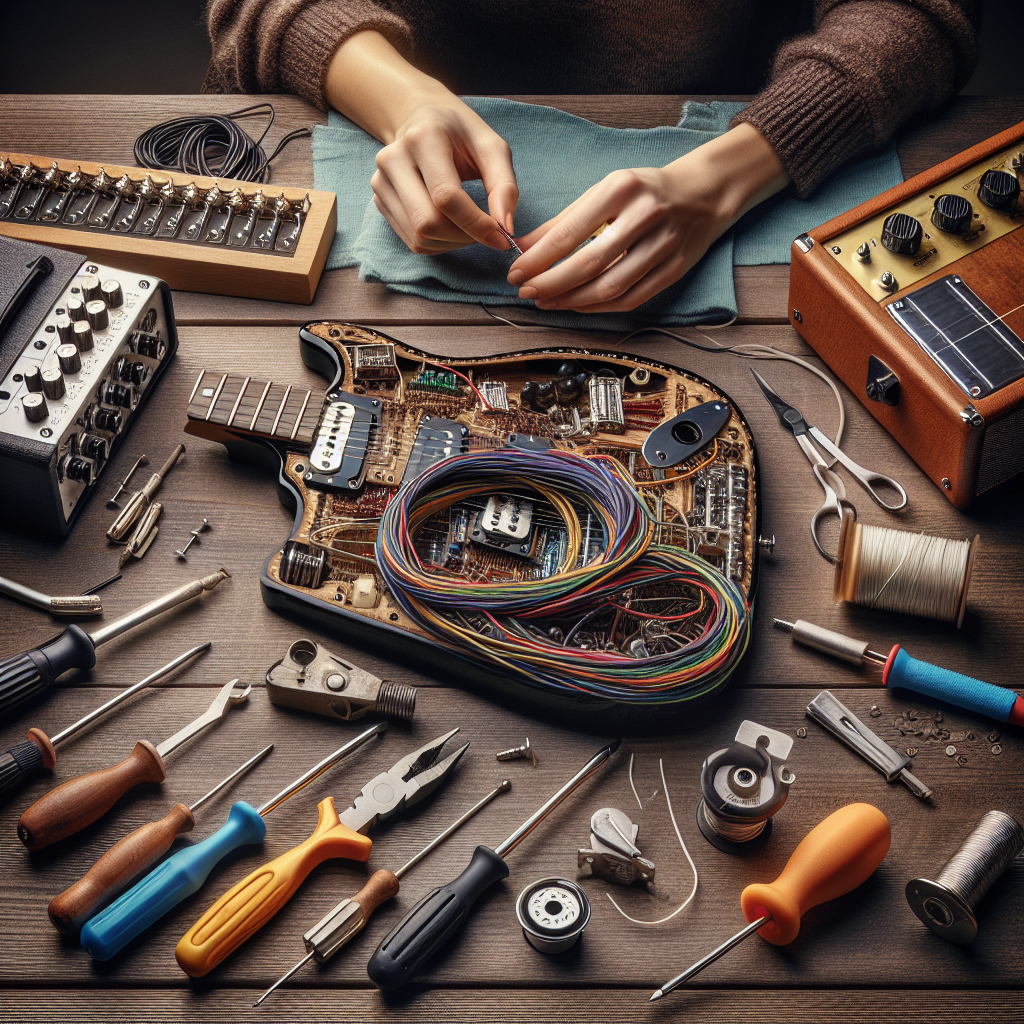
10 Steps to Masterfully Build Your Guitar Wiring Harness
Whether you’re a budding musician or an experienced guitarist, knowing how to build a guitar wiring harness can take your sound to the next level. Understanding your guitar’s electronics allows for a personalized sound experience, increases your instrument’s longevity, and can save you money in the long run. Plus, building your own wiring harness can be an incredibly rewarding DIY project. Let’s dive into the process with these comprehensive steps.
1. Gather Essential Tools and Materials
Before starting, make sure you have the following items:
- A soldering iron and solder
- Wire cutters and strippers
- Multimeter
- Guitar pots (250k or 500k, depending on your preference)
- Capacitors and resistors
- Toggle switch or blade switch
- Output jack
- Shielded wire
- Pickups and any necessary mounting hardware
The right tools and materials will make the process smoother and ensure a high-quality end result.
2. Understand the Guitar Wiring Diagram
Before touching any components, familiarize yourself with a guitar wiring diagram. Several websites, like Seymour Duncan, offer comprehensive diagrams. Understanding this map of your guitar’s electronic connections will help you assemble your wiring harness correctly.
3. Prepare the Pickguard or Control Plate
Your next step is setting up the base where components will be mounted, typically a pickguard or control plate. Drill appropriate holes if necessary, ensuring everything fits neatly. This is your chance to visualize how everything is going to be placed and identify any potential issues.
4. Solder the Pots
Place the potentiometers (pots) onto the pickguard/control plate. Solder the wires to the correct lugs following your wiring diagram. It’s vital to avoid overheating components, which can damage them. Use clips as heat sinks if needed.
5. Connect the Capacitors
The capacitor is crucial in controlling your tone. Attach the capacitor to the tone pot, as it will filter high frequencies. Be careful with the soldering process here to keep connections clean and reliable.
6. Install the Switch
Depending on your guitar, you may have a toggle switch or blade switch. Connect it according to the wiring diagram. This switch acts as the control center for directing which pickups are active.
7. Wiring the Output Jack
The output jack is the gateway for your guitar’s signal to leave and head to the amplifier. Correctly wire the ground and hot connections, ensuring they are secure and free from solder bridging.
8. Test the Connections
Use a multimeter to check for any potential shorts or open circuits. This step can save you time by identifying errors before a full installation. Simply checking continuity can prevent hours of troubleshooting down the line.
9. Mount the Components
Once tested, securely mount all of your components to the guitar body. Make sure all screws and mounts are tight to prevent any movement when playing.
10. Final Adjustment and Testing
Once everything is secure, reassemble your guitar. Plug your guitar into an amplifier to test the functionality of pickups, pots, and the switch. Re-check if there’s any unwanted noise or if something feels off. Adjust as necessary.
FAQs
Q1: What does a guitar wiring harness do?
A: A guitar wiring harness manages the electrical signals from your guitar’s pickups out to the output jack, affecting tone and volume controls.
Q2: Can I use any type of solder for guitar electronics?
A: It’s best to use rosin-core, lead-free solder specifically designed for electronic work; this ensures better sound quality and safer handling.
Q3: What’s the difference between 250k and 500k pots?
A: Generally, 250k pots are used for single-coil pickups (smoother, warmer tones), while 500k pots are for humbuckers (brighter tones).
Q4: How can I ensure a clean solder joint?
A: Make sure the components are clean, use just enough heat to melt the solder, and ensure the joint is shiny and smooth, not grainy or dull.
Q5: Do I need shielding in my guitar wiring harness?
A: Shielding is optional but recommended; it helps eliminate interference and noise, giving you a cleaner sound.
Q6: Why might my guitar not work after installing a new wiring harness?
A: Common reasons include cold solder joints, incorrect wiring connections, or damaged components. A systematic check follows the wiring diagram for troubleshooting.
By mastering the art of building your guitar wiring harness, you not only improve your expertise with your instrument but also enhance your guitar’s sonic capabilities. This hands-on project is perfect for aspiring guitar technicians or passionate hobbyists looking to deepen their understanding of electric guitars.
Remember, practice makes perfect. The first time might be challenging, but with each attempt, you’ll gain confidence and finesse. Enjoy the process, make it your own, and rock on!